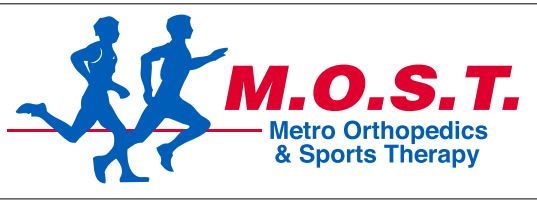It is the application of a specialized tourniquet system to an upper arm or leg, which is inflated, to a personalized and specific pressure to reduce blood flow to an exercising extremity. The application is brief and intermittent, typically about 6 minutes per exercise, but can last up to 30 minutes based on the specific protocol. With PBFR you can create significant strength and muscle growth gains significantly faster than resisted exercises alone, allowing for rapid recovery of strength and function after injuries and surgical procedures. “M.O.S.T” serves the communities of Bethesda, Rockville, Gaithersburg, Germantown, Olney, Washington DC, Chevy Chase, Frederick, Poolesville, McLean, VA, Dulles, VA, and Fairfax, VA.
Questions & Answers
What is PBFR (Personalized Blood Flow Restriction Training)?
It is the application of a specialized tourniquet system to an upper arm or leg, which is inflated, to a personalized and specific pressure to reduce blood flow to an exercising extremity. The application is brief and intermittent, typically about 6 minutes per exercise, but can last up to 30 minutes based on the specific protocol. With PBFR you can create significant strength and muscle growth gains significantly faster than resisted exercises alone, allowing for rapid recovery of strength and function after injuries and surgical procedures.
Is there any research for personalized blood flow restriction rehabilitation? Does it work?
Yes. There have been over 820 studies on blood flow restriction training. PBFR consistently demonstrates greater results compared to control groups exercising without PBFR. The positive results have been seen in patients after injury, in the elderly, and in athletes. It has also been applied extensively in a military rehabilitation setting on severely compromised patients.
Who should use PBFR?
PBFR is appropriate for most injuries. Clinically our providers have applied it to many diagnoses with very positive results including but not limited to total joint arthroplasties, Achilles repairs, fractures, rotator cuff repairs, muscle strains, nerve injuries, post-operative knee reconstructions and cartilage repairs, and tendinopathies.
Is PBFR safe?
PBFR has consistently demonstrated to be a safe modality in the literature. It has been performed on thousands of subjects in the peer-reviewed literature with little to no side effects.
Why should I do PBFR?
After injury or surgery a patient is usually unable to lift loads or at an effort level known to induce skeletal muscle adaptation. PBFR allows the clinician to begin the strength and hypertrophy phases of rehabilitation much earlier. PBFR has demonstrated statistically significant improved patient outcomes after anterior cruciate ligament surgery both acutely and chronically.
http://www.ncbi.nlm.nih.gov/pubmed/11128848http://www.ncbi.nlm.nih.gov/pubmed/12635796






